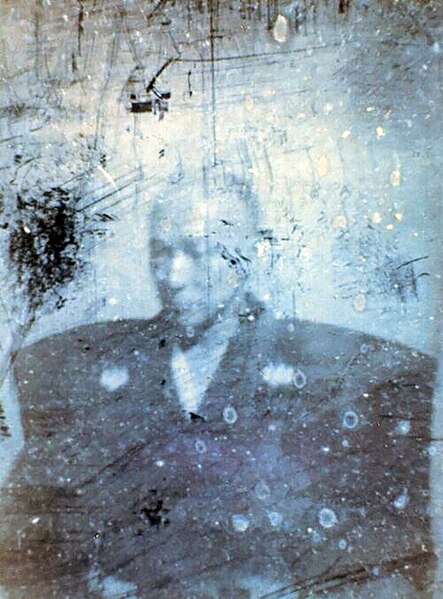The Bombardment of Kagoshima, also known as the Anglo-Satsuma War , was a military engagement fought between Britain and the Satsuma Domain in Kagoshima from 15 to 17 August 1863. The British were attempting to extract compensation and legal justice from daimyo Shimazu Tadayoshi for the 1862 Namamugi Incident, when a Royal Navy fleet commanded by Sir Augustus Leopold Kuper was fired on from Satsuma coastal batteries near Kagoshima. The British responded by bombarding the city in retaliation, but were unable to gain a conclusive victory and retreated two days later. The Satsuma declared victory and after negotiations fulfilled some British demands for the Namamugi Incident.
Bird's-eye view of the bombardment of Kagoshima by the Royal Navy, August 15, 1863. Le Monde Illustré.
An illustration of the negotiation onboard French Navy warship Sémiramis between the Tokugawa shogunate and Britain and France on July 2, 1863. Among the European negotiators is Edward St. John Neale, Gustave Duchesne de Bellecourt, Benjamin Jaurès and Sir Augustus Leopold Kuper.
A Japanese painting of the bombardment
An illustration of the start of the bombardment
The Satsuma Domain , briefly known as the Kagoshima Domain , was a domain (han) of the Tokugawa shogunate of Japan during the Edo period from 1602 to 1871.
Former site of Kagoshima Castle in Kagoshima
A 150-pound Satsuma cannon, cast in 1849. It was mounted on Fort Tenpozan at Kagoshima. Caliber: 290 mm, length: 4220 mm
A daguerreotype of Shimazu Nariakira
Saigō Takamori








